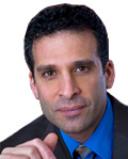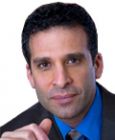Anger
The Blessings and Challenges of Having “A Protector’s Brain”
Removing shame from our interactions with youth who have endured trauma.
Posted September 25, 2016
“Doc, I have an Anger Problem.”
I have heard that confession thousands of times over the thirty years I have been practicing medicine with teens. I work with marginalized youth at Covenant House Pennsylvania, but I also work with young people from well-resourced and loving homes. What youth with “anger problems” have in common is that most of them have been through some major challenges, even traumas, in their lives. Childhood trauma has been proven to have a profound lifelong impact on the brain, behavior, and overall health and well-being. However, human connection has also been proven to be deeply protective.
Whether you are reading this as a loving parent wanting your child to gain a full recovery or a youth-serving professional who wants to guide young people towards a better future - it is imperative that we start by removing shame, stigma, and blame from the healing process.
Young people who tell me they have an anger problem, are bringing shame and self-blame into the room with them. They likely have received other labels that explain their anger – labels like “conduct disorder” or “oppositional defiant disorder.” These labels can be undermining to their self-worth, and most certainly to their progress. We need to offer them a strength-based empowering understanding of what they are experiencing.
Young people who have endured serious challenges may have brain changes that impact on behavior. In short, the part of their brain that senses danger is wired to be on overdrive. This can make them “go off” to triggers that wouldn’t affect the rest of us. This hypersensitivity to danger signals may have been lifesaving at some point in their past. A central factor in resilience is having the mindset that can distinguish between "real tigers" (those things that deserve all of our attention and should trigger our fight or flight responses), and “paper tigers” (those things that might arouse our danger signals, but really cannot harm us). Until somebody can distinguish real from paper tigers, they cannot focus enough to problem solve. After all, we are not designed to turn to the tiger and say, "Can't we work this out, you know, talk it through?"
We must shift the lens through which we view "angry" youth.
Yes, youth sometimes do have problems controlling their anger. But, it is equally as true that youth who have been through challenging times are some of the most compassionate, committed, caring people among us. They want to repair the world, and would often share their last dime with somebody who has less.
I do this work not out of pity, or selflessness, but because these young people inspire me.
Our challenge is to recognize and build upon the strengths of these youth while helping them learn to control some of the reactive impulses that can sometimes do them harm.
Better language sets the tone for healing
Words matter. They create the tone for our mood and behavior.
Expectations matter. They create reality because young people rise or lower themselves to meet the expectations that surround them.
“Doc, I have an anger problem.”
“I’ll bet you’ve earned the right to have that anger.”
“I sure have!”
This is likely not the space to dig deeper. A young person may begin to share what happened to them, but they must remain in control of the pace and depth of their sharing. Sometimes it is best to just be there and reinforce that they have earned the right to feel as they do.
“May I ask you some questions? Do you “go off” or get angry faster than other young people you know?”
“Yes, that’s my problem.”
“Do you see problems before others do? Do you sense danger faster than others? Do you do whatever it takes to protect yourself?”
“How do you know all of that?”
“Do you have a little brother or sister? Or cousin? Are you incredibly protective of them? Are you always looking to keep them out of danger?
"I'm not going to let anything happen to them!"
“Do your friends tend to come to you for advice, because you are really sensitive to what others think?
“Yeah, my friends are always saying I get them. But, they also know I go off easier than most of them do.
“You have a “Protector’s Brain.” You’ve earned it. Your sensitivity, your always thinking about keeping yourself and others safe, that is your POWER – you are somebody who is designed to protect yourself and others.”
At this point the toughest, well-practiced personas can melt away, often into tears, as these young people are seen –finally- as they deserve to be seen, as they really are, not based on the behaviors they might have displayed.
“Your challenge is to know when to use your power, and to better understand when it might get in your way. Can we work together so you can learn how and when to use this strength of yours?"
Words matter. From our words flow our healing intentions.
Dr. Ken Ginsburg is the author of “Building Resilience in Children and Teens” as well as editor of the professional multimedia toolkit “Reaching Teens: Strength-based Communication Strategies to Build Resilience and Support Healthy Adolescent Development”


